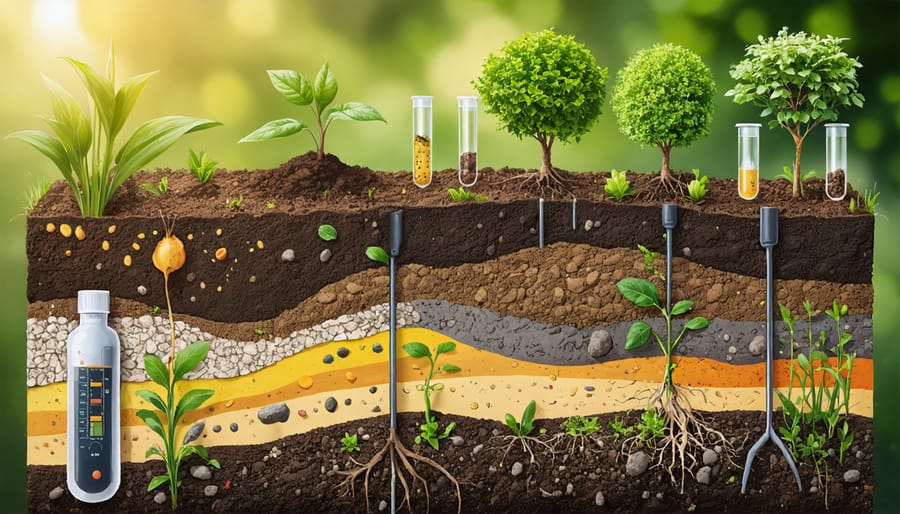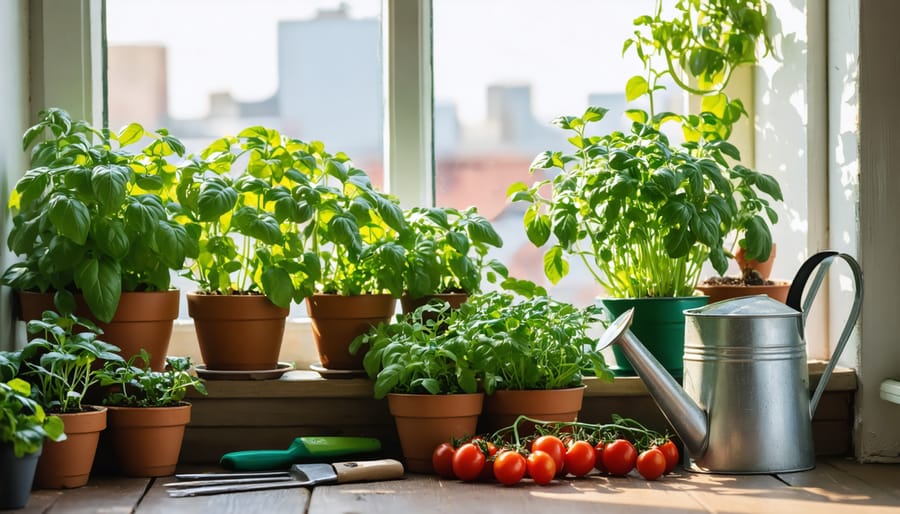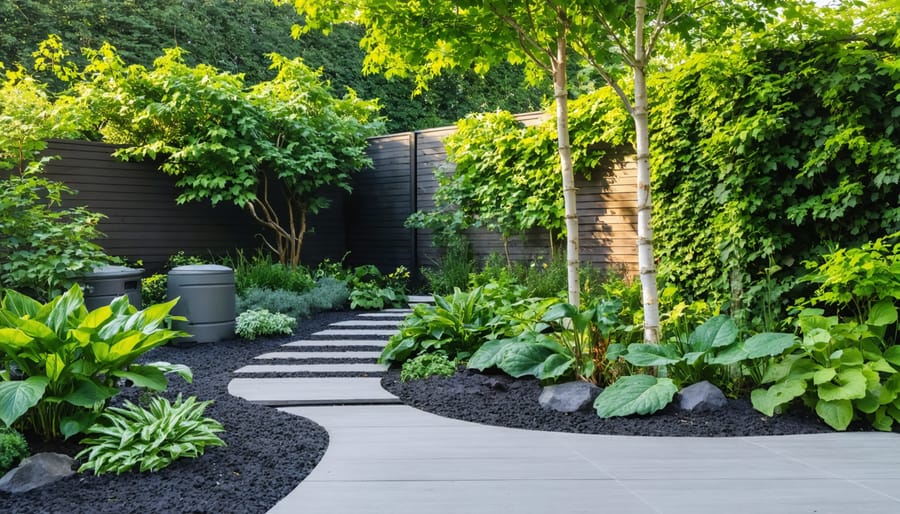Transform your garden’s health with Expert Gardener Plant Food by following precise application techniques trusted by professional horticulturists. Mix one tablespoon of concentrated solution per gallon of water for established plants, applying directly to the root zone every two weeks during the growing season. For potted plants, reduce the concentration to half-strength to prevent nutrient burn while maintaining optimal feeding schedules. Monitor leaf color and growth patterns as part of your regular garden maintenance tips, adjusting application rates based on individual plant responses. This balanced approach to fertilization ensures robust growth while protecting delicate root systems from over-fertilization.
Understanding Expert Gardener Plant Food
Types and Formulations
Expert Gardener plant food comes in several formulations to suit different gardening needs. The most common type is the all-purpose granular fertilizer, perfect for general feeding of flowers, vegetables, and shrubs. This balanced formula typically offers a 10-10-10 or 12-12-12 NPK ratio, providing equal amounts of essential nutrients.
For flowering plants, there’s a bloom-boosting formula with higher phosphorus content, usually in a 3-15-3 ratio, encouraging abundant blooms and strong root development. The liquid concentrate version is ideal for quick nutrient absorption and can be applied through watering cans or sprayers.
Specialized formulations include acid-loving plant food for azaleas and rhododendrons, vegetable-specific blends rich in nitrogen, and slow-release granules that feed plants for up to three months. There’s also an organic option made from natural ingredients like bone meal and seaweed extract, perfect for environmentally conscious gardeners.
Each type comes with clear application instructions on the package, making it easy to choose the right formula for your specific gardening needs.

Reading the Numbers
Understanding NPK numbers on your plant food is like learning a simple gardening code. These three numbers represent Nitrogen (N), Phosphorus (P), and Potassium (K) in that exact order. For example, if you see 10-5-5, this means the fertilizer contains 10% nitrogen, 5% phosphorus, and 5% potassium.
Nitrogen promotes leafy green growth, phosphorus supports strong roots and blooming, while potassium helps with overall plant health and disease resistance. Higher first numbers are great for foliage plants, while higher middle numbers benefit flowering plants.
Remember that these percentages always add up to less than 100% because fertilizers contain other beneficial ingredients and carriers. When choosing your plant food, match these numbers to your plants’ specific needs – leafy vegetables might need more nitrogen, while flowering plants often prefer more phosphorus.
Don’t worry too much about memorizing exact ratios; just remember that the first number feeds leaves, the second feeds roots and flowers, and the third supports overall plant strength.
Perfect Timing: When to Apply
Seasonal Schedule
Spring marks the start of your feeding schedule, beginning when plants show new growth. Apply Expert Gardener plant food every 7-14 days throughout the active growing season from March to May. During summer months (June-August), maintain regular feeding but increase frequency to weekly for heavy feeders like tomatoes and flowering plants.
As autumn approaches (September-October), reduce feeding to every three weeks and adjust the concentration to half-strength. This helps plants prepare for dormancy without encouraging vulnerable new growth. Stop feeding most plants by late October, except for winter-growing specimens and indoor plants, which benefit from monthly feeding at quarter-strength.
Resume your feeding schedule when spring returns and plants show signs of new growth. Remember that different plants have varying needs – flowering plants require more frequent feeding during blooming periods, while succulents and cacti need less. Always check your specific plant’s requirements and adjust the schedule accordingly.
For year-round indoor plants, maintain a consistent feeding routine but reduce frequency and strength during winter months when growth naturally slows.

Plant-Specific Timing
Different plants have unique feeding requirements throughout their growing cycles. Flowering plants benefit most from fertilization when buds begin to form, typically every 4-6 weeks during the blooming season. For vegetable gardens, apply plant food every 2-3 weeks during the active growing period, reducing frequency once fruits start developing.
Houseplants generally need feeding every 2-4 weeks during spring and summer but require less during their dormant winter period. For newly planted shrubs and trees, wait 2-3 months after planting before the first application, then feed quarterly during the growing season.
Indoor herbs thrive with bi-weekly feeding during active growth, while outdoor herbs may need slightly more frequent applications, especially when harvested regularly. Tropical plants and heavy feeders like tomatoes and roses benefit from weekly feeding during peak growing seasons.
Remember to always reduce feeding frequency during cooler months when plant growth naturally slows. It’s better to slightly under-feed than over-feed, as excess fertilizer can damage roots and affect plant health. Watch your plants for signs they need feeding, such as pale leaves or slow growth, and adjust your schedule accordingly.
Application Methods That Work
Granular Application
Applying granular plant food is a straightforward process that yields excellent results when done correctly. Start by measuring the appropriate amount according to your package instructions – typically, you’ll need about 1-2 tablespoons per square foot of soil area. Always wear gardening gloves to protect your hands during application.
For established plants, sprinkle the granules evenly around the base of the plant, keeping them about 6 inches away from the stem to prevent burning. Use a hand-held spreader for larger areas like lawns or extensive garden beds to ensure even distribution. After application, gently work the granules into the top inch of soil using a garden rake or your fingers.
One of the most crucial steps is watering thoroughly after application. This helps dissolve the granules and allows the nutrients to begin moving into the soil where roots can access them. A good rule of thumb is to water until the soil is moist but not waterlogged.
For container plants, reduce the application rate by about half and mix the granules into the top layer of potting soil. Remember to keep granules away from foliage and flowers, as direct contact can cause burning. Consider setting a reminder on your calendar for future applications – most granular fertilizers need reapplication every 6-8 weeks during the growing season.

Liquid Application
Mixing liquid plant food correctly is crucial for your plants’ health and growth. Start by gathering your supplies: the Expert Gardener concentrate, a clean mixing container, and appropriate spray application tools. Always read the product label carefully, as concentration needs can vary depending on plant types and growing conditions.
For a standard application, mix 1-2 tablespoons of concentrate per gallon of water. Use lukewarm water to ensure the solution dissolves completely, and stir gently until well combined. If you’re using a hose-end sprayer, adjust the dilution dial according to the product recommendations.
When applying the mixture, spray evenly across the plant’s foliage, ensuring coverage on both the upper and lower leaf surfaces. Water droplets should be fine and misty rather than heavy and dripping. The best time to apply liquid fertilizer is early morning or late afternoon when temperatures are cooler and the sun isn’t intense.
Remember to clean your spraying equipment thoroughly after each use to prevent clogging and ensure even distribution in future applications. Store any unused mixture according to package instructions, and never apply fertilizer to dry soil – always water your plants first to prevent root burn.
A helpful tip from experienced gardeners: Keep a dedicated watering can or sprayer specifically for fertilizer use to avoid any cross-contamination with other garden products.
Common Mistakes to Avoid
While using Expert Gardener plant food can significantly boost your garden’s health, there are several common mistakes that even seasoned gardeners make. By following these proven gardening strategies, you can avoid these pitfalls and ensure your plants thrive.
One of the most frequent errors is over-feeding plants. Remember, more isn’t always better! Excessive plant food can burn roots and lead to stunted growth. Always measure carefully and follow the recommended dosage on the package.
Inconsistent timing is another mistake to watch out for. Creating a feeding schedule and sticking to it helps your plants develop steady, healthy growth patterns. Don’t wait until your plants show signs of distress before feeding them.
Many gardeners make the mistake of applying plant food to dry soil. Always water your plants thoroughly before application, and ensure the soil is moist but not waterlogged. This helps prevent root burn and allows for better nutrient absorption.
Applying plant food during the wrong season can also impact its effectiveness. Many plants have specific feeding needs during their growing season, and feeding them during dormancy can be counterproductive.
Don’t forget to consider your plant’s specific needs. Using the same feeding routine for all plants is a common error. Some plants are heavy feeders, while others require minimal fertilization. Take time to learn about each plant’s individual requirements.
Lastly, avoid applying plant food to damaged or diseased plants. Focus on helping them recover first, then resume feeding once they show signs of improvement.
Using Expert Gardener plant food effectively doesn’t have to be complicated. By following the recommended application rates, timing your feedings appropriately, and maintaining consistent watering practices, you can create an optimal growing environment for your plants. Remember to always start with a soil test to understand your garden’s specific needs, and adjust your feeding schedule based on the seasons and your plants’ growth stages.
Safety should always be your priority – wear gloves, store the product properly, and keep it away from children and pets. While it might be tempting to use more plant food than recommended, remember that overfeeding can harm your plants more than underfeeding. Start with the suggested amounts and observe your plants’ response.
By incorporating these feeding practices into your regular gardening routine, you’ll be rewarded with healthier, more vibrant plants. Keep a gardening journal to track your progress and adjust your approach as needed. With patience and consistent care, you’ll develop a deeper understanding of your plants’ needs and become more confident in your plant feeding practices. Happy gardening!




